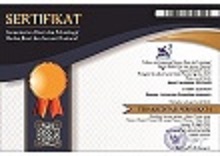Tingkat Kerentanan Bencana pada Sekolah Kasus: Sekolah Menengah Kejuruan (SMK) Negeri di Kota Bandung
Abstract
Penelitian ini dilatarbelakangi oleh pentingnya mengetahui kerentanan suatu bencana pada bangunan sekolah. Faktor geologi, topografi, lingkungan, dan perencanaan bangunan mempengaruhi terhadap kerentanan bencana. Penyesuaian arah pembangunan maupun penguatan pada bangunan sekolah merupakan upaya pemerintah dalam melindungi sektor pendidikan. Hal ini dituangkan dalam program sekolah aman bencana yang di dalamnya terdapat 3 (tiga) pilar, salah satunya adalah fasilitas sekolah. Fasilitas sekolah ini menjadi faktor penting karena mewadahi pilar yang lain. Penelitian ini bertujuan untuk mengidentifikasi tingkat kerentanan suatu bencana pada SMK Negeri di Kota Bandung. Keberagaman dan kompleksitas kondisi lingkungan SMK dapat menjadi contoh oleh tingkatan sekolah yang lain. Metode penelitian menggunakan deskriptif kualitatif, dengan subjek penelitian adalah 16 SMK Negeri di Kota Bandung.
Hasil penelitian diperoleh bahwa kerentanan bencana yang tertinggi terhadap SMK Negeri di Kota Bandung adalah bencana kebakaran, selanjutnya diikuti secara berturut-turut gempa bumi, banjir, angin putting beliung, dan bencana tanah longsor.
This research is motivated by the importance of knowing the vulnerability of a disaster in school buildings. Geological, topographic, environmental, and building planning factors affect the vulnerability of disasters. Adjustment of the direction of development and strengthening in school buildings is the government's efforts in protecting the education sector. This is stated in a disaster-safe school program in which there are 3 (three) pillars, one of which is a school facility. This school facility becomes an important factor because it accommodates the other pillars. This study aims to identify the vulnerability level of a disaster at Public Vocational High School in Bandung. The diversity and complexity of Vocational High School environment conditions can be an example by other school levels. This research type is descriptive qualitative, with subject of research is 16 Public Vocational High School in Bandung City.
The results of research shows that the highest disaster vulnerability to Public Vocational High School in Bandung is a fire disaster, followed by successive earthquake, flood, tornado, and landslide.
Full Text:
PDFReferences
ADPC. (2003). Community-Based Disaster Risk Management: Field Practitioners. Bangkok Thailand: Asian Disaster Preparedness Center.
Anonim. (2002). Undang-undang RI Nomor 28 tahun 202 tentang Bangunan Gedung.
Anonim. (2007). Undang-undang RI Nomor 24 Tahun 2007 tentang Penanggulangan Bencana. Retrieved from https://www.bnpb.go.id/ppid/file/UU_24_2007.pdf
BAPPEDA Provinsi Jawa Barat. (2010). Peraturan Daerah Nomor 22 Tahun 2010. Bandung. Retrieved from http://www.bapeda-jabar.go.id/bapeda_design/docs/perencanaan/20070801_102211.pdf?cv=1
BNPB. (2015). Kebijakan Penanggulangan Bencana. Jakarta. Retrieved from https://bnpb.go.id/website/asp/berita_list.asp?c=4
Carter, W. N. (1991). Disaster Management, Disaster Manager’s Handbook. Manila: Publication of the Asian Development Bank.
Kemendikbud. (2015). Modul 1 pilar 1 - fasilitas sekolah aman. Jakarta: Biro Perencanaan dan Kerjasama Luar Negeri Sekjen Kemendikbud bekerjasama dengan UNICEF.
Kementerian ATR. (2016). Peta Risiko Bencana di Indonesia. Jakarta.
Kodoatie, R. J., & Sjarief, R. (2010). Tata Ruang Air. Yogyakarta: Andi Offset. Retrieved from https://archive.org/stream/BukuArsitektur/1822_Tata Ruang Air_djvu.txt
Meliano, I. (2015). Analisis Resiko dan Arah Mitigasi Kota Bandung. In Seminar Sosialisasi Hasil Penilaian Ketahanan Kota Bandung terhadap Bencana. Bandung: Pemerintah Kota Bandung.
Muhammadiyah Disaster Manajemen Center. (2010). Strategi Pengarusutamaan Pengurangan Risiko Bencana di Sekolah. Jakarta. Retrieved from http://eprint.ums.ac.id
Perka Badan Nasional Penanggulangan Bencana. (2012). Pedoman Penerapan Sekolah/Madrasah Aman dari Bencana. Jakarta. Retrieved from https://bnpb.go.id/website/asp/berita_list.asp?c=4
Permana, A. Y. (2011). Penerapan Konsep Perancangan Smart Village sebagai Local Genius Arsitektur Nusantara. Jurnal Arsitektur Komposisi, 9(1), 24–33.
Permana, A. Y. (2014). Transformasi Gubahan Ruang: Pondokan Mahasiswa di Kawasan Balubur Tamansari Kota Bandung. Universitas Diponegoro. Retrieved from http://eprints.undip.ac.id/62084/
Permana, A. Y., Soetomo, S., Hardiman, G., & Buchori, I. (2013). Smart Architecture as a Concept of Sustainable Development in the Improvement of the Slum Settlementarea in Bandung, 2(9), 26–35.
Permana, A. Y., Susanti, I., & Wijaya, K. (2018). The Transformation of Gegerkalong Girang Area, Bandung City: amid Educative and Religious Areas. IOP Conference Series: Earth and Environmental Science, 213(1), 012022. https://doi.org/10.1088/1755-1315/213/1/012022
Permana, A. Y., & Wijaya, K. (2013). Education City As Identity of Bandung City. In International Conference on Urban Heritage and Sustainable Infrastrcture Development (UHSID) (pp. 15–19). Semarang: Architecture Departement of Diponegoro University.
Permana, A. Y., & Wijaya, K. (2017). Spatial change transformation of educational areas in Bandung Spatial change transformation of educational areas in Bandung. In IOP Conference Series: Earth and Environmental Science (International Conference on Sustainable in Architecture Design Urbanism/ICSADU) (Vol. 99, p. 012029). Semarang: IOP Conference Series: Earth and Environmental Science. https://doi.org/10.1088/1755-1315/99/1/012029
Rahmat, A., Prianto, E., & Sasongko, S. B. (2018). Studi Evaluasi Model Bentuk Atap Dan Fenomena. Jurnal Arsitektur Zonasi, 1(2), 112–122. https://doi.org/http://10.17509/jaz.v1i2.13560
Rinaldi, I. R. (2017). Identifikasi Kerentanan Bencana pada SMK Negeri Kota Bandung. Universitas Pendidikan Indonesia.
Sitinjak, F. (2011). Adaptasi dan antisipasi bencana gempa berdasarkan persepsi masyarakat studi kasus: kota tarutung. Univesitas Sumatera Utara. Retrieved from http://repository.usu.ac.id
Soegiarto, M. (2013). Evaluasi Sarana dan Prasarana Laboratorium Komputer SMK Muhammadiyah Prambanan Berdasarkan PERMENDIKNAS NO. 40 TAHUN 2008. Universitas Negeri Yogyakarta. Retrieved from https://eprint.uny.ac.id
Sugiyono. (2010). Metode Penelitian Kuantitatif Kualitatif dan R&D (XIII. Bandung: Alfabet, CV.
Suyono, & Maharani, A. (2011). EVALUASI JALUR EVAKUASI PADA GEDUNG BERTINGKAT 7 LANTAI (Studi Kasus di Gedung Graha Universitas Widyatama Bandung). Bandung. Retrieved from http://repository.widyatama.ac.id
Walhi. (2011). Bencana Bukan Murka Melainkan Akumulasi Kerusakan Alam. Nusa Tenggara Timur. Retrieved from https://walhi.or.id/en/kampanye-dan-advokasi/tematik/kelola-bencana
DOI: https://doi.org/10.17509/jaz.v2i1.14744
Refbacks
- There are currently no refbacks.
Copyright (c) 2019 Jurnal Arsitektur ZONASI

This work is licensed under a Creative Commons Attribution-ShareAlike 4.0 International License.





